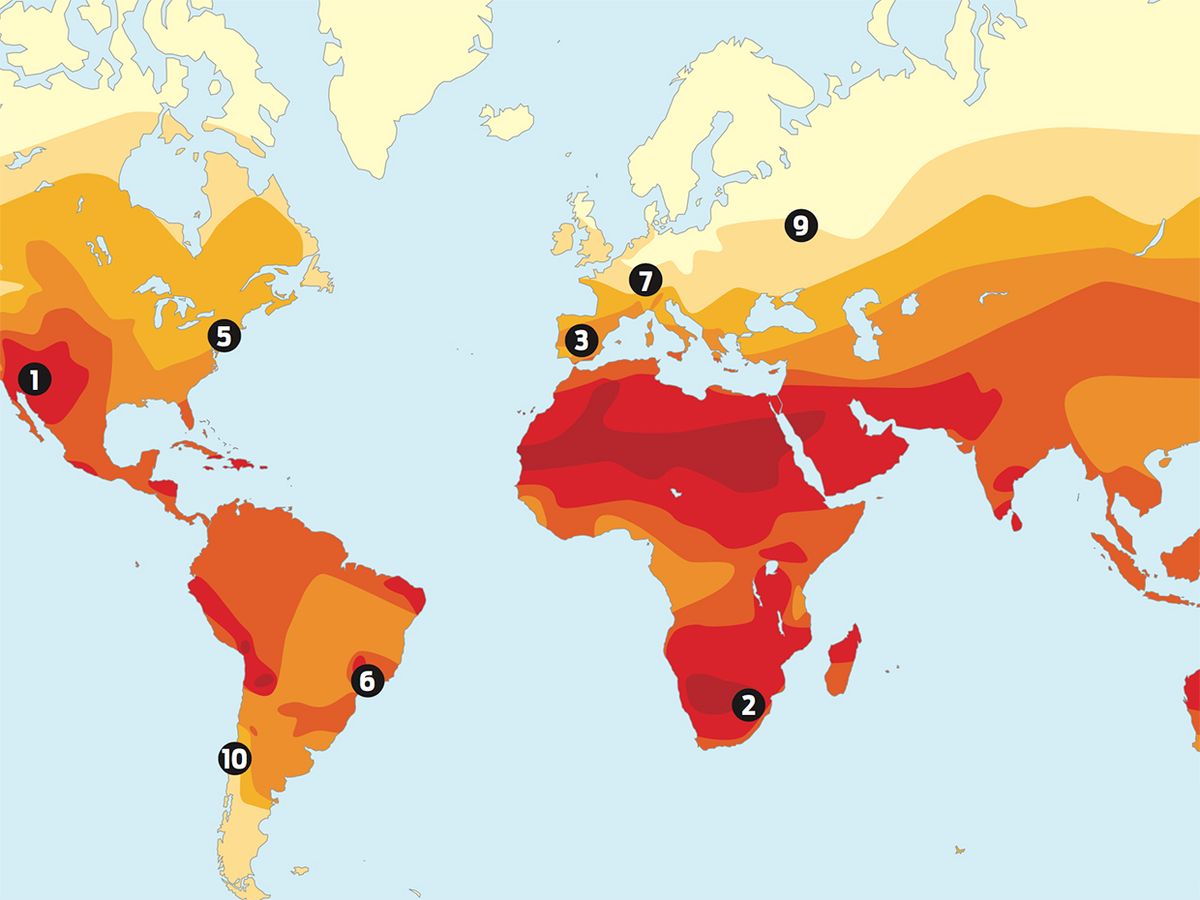Renewable-energy technologies promise to liberate us from fossil fuels. But this implies that their energy payback periods—the time it takes for a system to recover the energy used to produce it—is just as important as financial payback. If you install solar cells on your roof, you want the system to pay for itself eventually, but you also want to help your country get a grip on global warming and stop depending on foreign fossil supplies.
“Most people who take the initiative to put photovoltaics on their homes and businesses are looking at the economics, certainly, but they’re looking beyond that, too,” in the words of Gary Schmitz, a spokesman for the National Renewable Energy Laboratory, in Golden, Colo.
A key variable is how solar cells perform once installed. The energy available to them could be close to 7 kilowatt-hours per square meter per day in Phoenix or 2 kWh/m2/d in Moscow [map, below]. For the most common type of module, which uses multicrystalline silicon, the energy payback times can be between one and four years [chart, below].


Most of the energy spent on solar modules goes into purifying the materials and encapsulating the modules. Vasilis Fthenakis, a scientist at Brookhaven National Laboratory, estimated the environmental footprint of solar systems, using assumptions about the transportation distances for materials and the amounts of energy needed to produce the cells, the modules, and their electrical and electronic subsystems [chart, below].

Of course, the attractiveness of renewable technologies depends not only on their energy paybacks. But too often, energy technologies are discussed solely in terms of their direct cost to end users without taking into account surrounding factors, Fthenakis says. “Taken together, they define the total cost of a renewable energy.”



